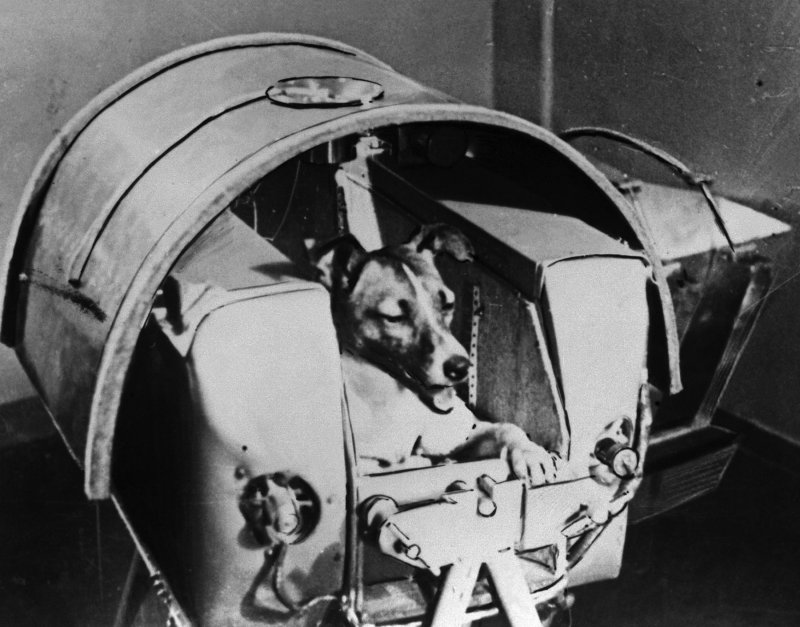Laika, a stray husky-spitz, made it to history as she embarked on her journey to the Earth’s orbit. Nervous and scared, she heroically sacrificed her life for her country in this mission, knowing that she could not go back. Sixty years ago, who foreseen that Sputnik 2 would crash across the Earth’s atmosphere, leading to the dog’s death? Who would have thought that this story would live on?

This plan matches the anniversary of Russia’s Bolshevik Revolution, per Premier Nikita Khrushchev’s requests. Their learning on Sputnik 1 made a ship, especially for a flying dog, and they called it Sputnik 2. Engineers believe this plan will be successful and expect that keeping the situation within the rules will make it.
Initially, Laika did not get oxygen and would die without any pain within a few seconds after a week in space. But Catherine Lewis, the curator of ISSPS, also called International Space Programs and Spacesuits at the Smithsonian’s National Air and Space Museum, is hesitant that it will be different by having a small food intake. In addition to her doubts, she remembers someone breaking a procedure by feeding the dog before takeoff.
Who Thought Of Bringing A Dog To Outerspace?
The story began when the Russian Council’s dog searcher started looking for stray female dogs. The candidate should be obedient and passive. Afterward, the final choices will live in a small pressurized kennel for a few days or weeks. They also observed the dog’s reaction to different changes, such as air pressure and loud noises that would come along during the takeoff.
The final choices were Kudryavka, later known as Laika, as the Sputnik 2’s astronaut and Albina as support. The initial option is Albina; however, she was spared from the tragic flight since she gave birth and won their keepers’ feelings. They also felt terrible when they chose Laika, even if they knew the dog would die. They had already started to love her.
Without knowing that her death was near, Laika entered her space capsule armed with sensors and a monitoring device. She also had a suit made for space travel. Three days later, on November 3 at 5:30 am, the spaceship took off.
Laika Meets A Tragic End
Laika’s heartbeat increased three times the normal, and her breath became four times the regular rate. The heat in the space capsule made it hard for Laika to breathe, and later on, it caused her death. Although she made it to the Earth’s orbit, she died with over 90 degrees heat on the fourth orbit.
The Soviet Union states that Sputnik 2 stayed in space for five months. They also claim that Laika stayed alive for less than a week; however, there are claims that the documents were untrue. Protest arose because they believed that the Soviet Union could not ensure that Laika would return to Earth safe and unharmed. Oleg Gazenko, a Russian doctor and space dog trainer, also said that the more he’s upset about what happened, the more.
Testing animals for space travel is also essential to determine whether humans can do it. People need to learn what a space journey is like and if an astronaut can still function after a space flight. Unfortunately, Laika’s fate is inevitable. Her trip to space continues to live in many sites, printouts, books, songs, and movies as it inspires fighting for animal welfare.
Russia built a statue to commemorate Laika’s sacrifice, and many remembrances took place in honor of the dog’s bravery. Laika is not the first dog to travel space and will not be the last. The Russians continue to test animal space travel, hoping it will return alive.
Credits: BBC News


